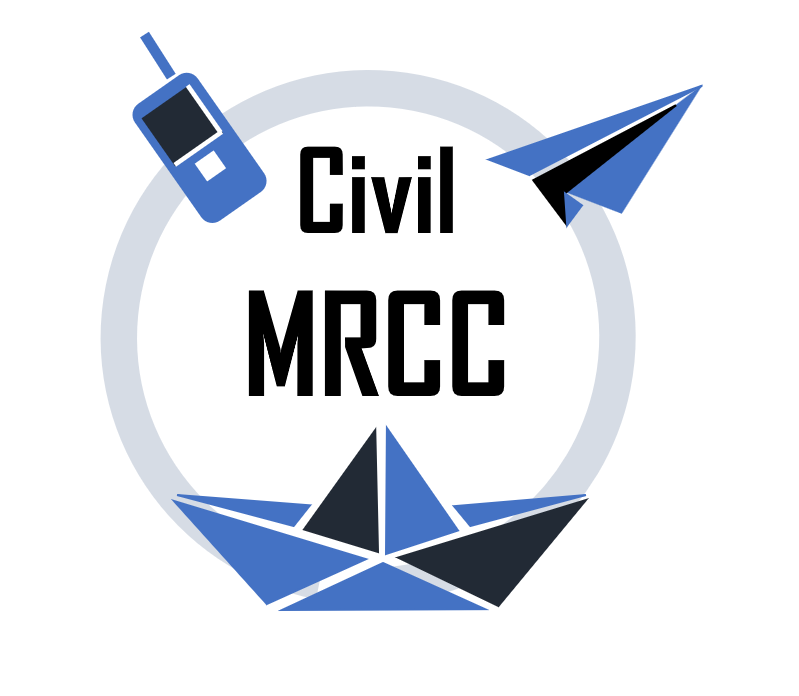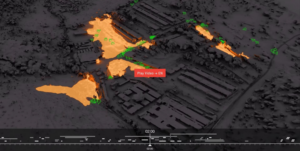Investigation by Forensic Architecture
“On 14 June 2023, the Adriana, a boat leaving Libya for Italy with hundreds of migrants on board, sank inside the Greek Search and Rescue (SAR) zone in the Mediterranean Sea. This would become the deadliest migrant shipwreck in recent history. Our digital reconstruction of the boat’s trajectory reveals inconsistencies in the Hellenic Coast Guard’s (HCG) account and indicates that over 600 people drowned as a result of actions taken by the HCG.

In the hours following the shipwreck, conflicting accounts about the incident began to circulate. The HCG denied responsibility, claiming that people onboard resisted offers for assistance, and that the boat capsized due to a sudden shift in weight. The survivors unanimously contest this account, blaming the HCG for multiple failed attempts to tow the boat, which ultimately destabilised it and led to its capsizing.
The incident took place at night and in international waters inside the Greek Search and Rescue (SAR) zone, meaning Greece was the coastal state responsible for initiating the necessary search and rescue operations. The wreck now rests 5,000 metres under sea level in the ‘Calypso Deep’, the deepest point in the Mediterranean, rendering its retrieval impossible. The only witnesses to the shipwreck are the 104 survivors of the migrant boat and the crew of a small open sea patrol vessel operated by the HCG, number ΠΠΛΣ 920, the same vessel accused by witnesses of the fatal towing.
According to our analysis and cross-referencing of data, there appear to have been a series of efforts by the HCG to distort and manipulate evidence related to the incident and silence witness accounts. Nearby commercial vessels that were initially summoned by the HCG to provide assistance were subsequently ordered to leave after the ΠΠΛΣ 920 arrived on the scene. Likewise, repeated offers by Frontex, the European Border and Coast Guard Agency, to deploy aerial surveillance assets were ignored, and none of the several cameras onboard the ΠΠΛΣ 920 nor its AIS tracking system were activated that night as is required.
Furthermore, all the survivors of the wreck had their phones confiscated by members of the HCG. Some survivors we interviewed mentioned that these phones, protected in waterproof cases, included videos they took of the moments leading up to the capsizing of the boat. Yet none of these phones have been returned, despite repeated requests from their owners. The first testimonies from survivors gathered by the HCG the day after the incident display signs of possible manipulation: their accounts use identical, boilerplate language and all fail to mention the towing that migrants later reported to have experienced.
Questions surrounding the sinking and the Greek state’s reluctance to provide clear answers demand a detailed reconstruction of the incident and the events leading up to it. (…)
The migrant boat had three decks – lower, middle and upper – all filled with people. Drawing on accounts from survivors, we estimate the total number of migrants onboard to have been between 720 and 750 persons. Survivors state that ‘in order to go from one place to another, you had to walk on people’. Most of the people were traveling on the bottom deck. There were several women and children in a separate, guarded room in the front of the middle deck. None survived.
The witnesses also described the increasingly dire conditions over the course of the journey. The boat was lost, navigating without equipment, relying mainly on the position of the sun for orientation. The engine was overheating and malfunctioning, and supplies were running low, resulting in at least two people dying from dehydration before the capsizing even took place. The boat was in clear distress. (…)
The Towing
According to survivors, when their boat’s engine stopped, the HCG vessel approached their boat, with their stern touching its bow. A masked man climbed onto their boat and tied a rope to their railing off-centre, to the right.
They then tried to tow the migrant boat twice. Both attempts lasted, according to the migrants we interviewed, between a few seconds and a few minutes. The first time, the rope snapped. The second time, using the same rope, the HCG pulled away even faster, causing the migrant boat to rock to the right, then to the left, then to the right again, and eventually capsizing to the right (starboard).
A group of witnesses who were sitting inside did not see the towing, but testified that they felt themselves being propelled forward ‘like a rocket’ long after their engine had stopped working. At 02:06, the HCG log notes that the migrant boat started sinking.
After capsizing, the boat turned upside down, and survivors climbed onto the hull, which was above the water’s surface for a few minutes. At this time, the ΠΠΛΣ 920 departed the scene, creating large waves in its wake that made swimming difficult and, according to survivors, further accelerated the sinking of the boat.
Survivors recount that the HCG traveled and remained a considerable distance from their boat, directing its lights towards the people adrift in the water. Numerous individuals from the migrant boat attempted to swim to the HCG boat unsuccessfully. After approximately 20-30 minutes, once the boat had completely sunk, the HCG sent a small Rigid Hull Inflatable Boat (RHIB) and started looking for survivors. (…)
In line with the survivors’ quest for justice, we will ensure the findings of this investigation be made available to all independent bodies seeking accountability for this deadly incident—an event which demonstrates once again the inhumane and lethal nature of the European border regime.“
Find the full report and a video with a reconstruction of testimonies here.
Article published in Echoes#7 – Moving on.



